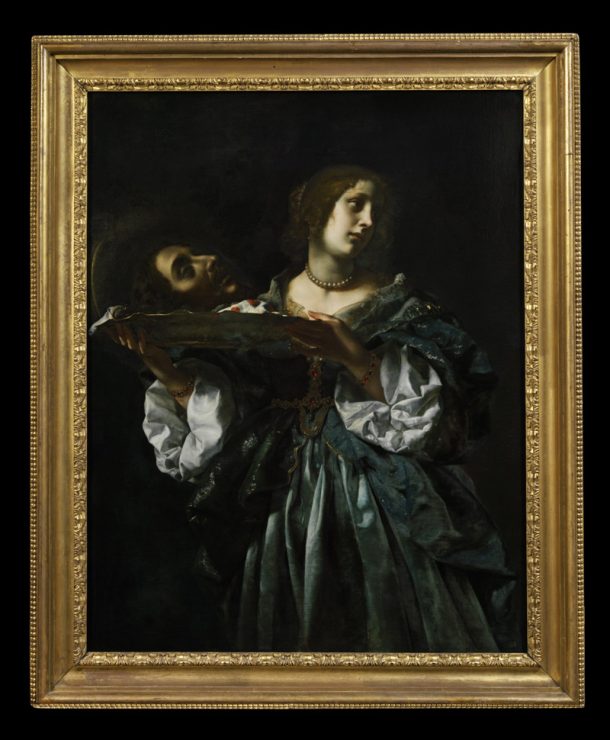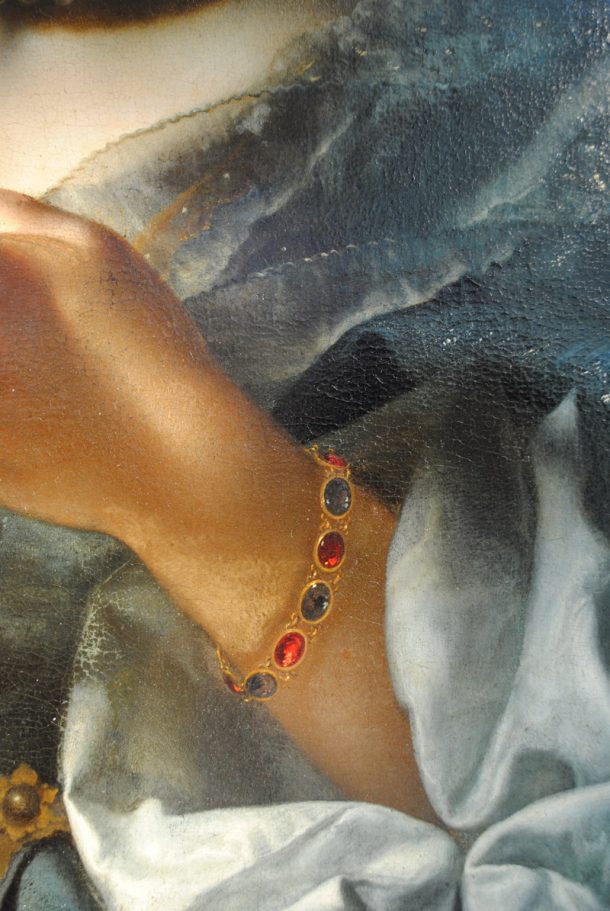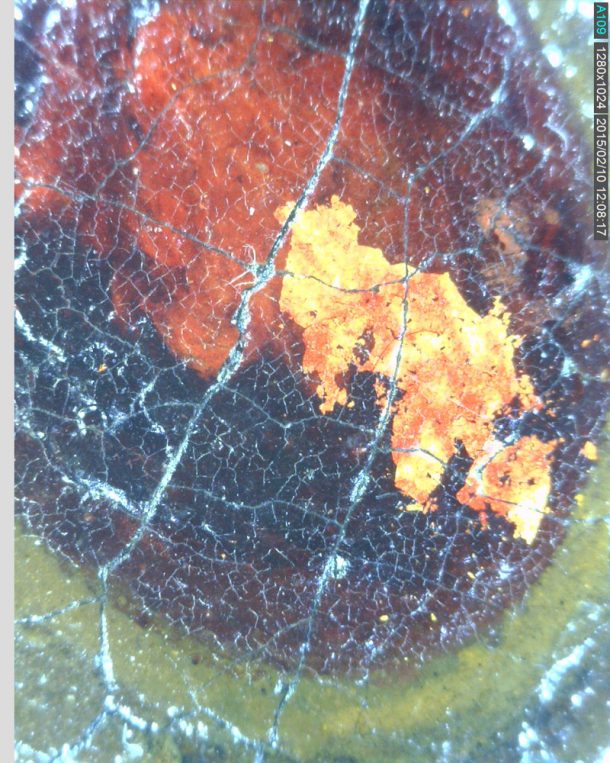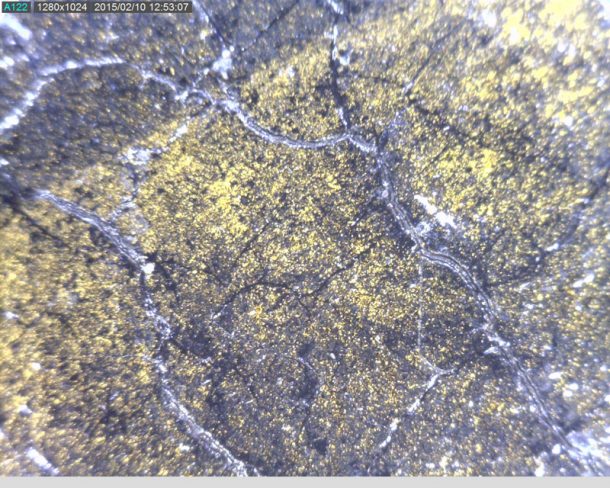by Clare Richardson, Paintings Conservator, and Paramita Sarkar, Intern, Paintings Conservation
The V&A painting of this subject is one of several known versions by Carlo Dolci and his followers, and is dated to the artist’s mature career, c.1670 (Figure 1). Dolci’s biographer, Baldinucci, described three autograph versions of the painting: of these, the only one that can be securely traced is the version in the Royal Collection, which was purchased from the artist by John Finch and presented to Charles II. Francesca Baldassari’s 1995 catalogue raisonnée of the artist accepts the Gemäldegalerie and V&A versions as also being autograph works, while closely similar compositions in Glasgow, Phoenix and Boston are considered to be copies.

The painting was examined in the conservation studio as it was being prepared for display in the Europe 1600-1815 Galleries, and its conservation history was reviewed. The painting was treated in 1961: the varnish was removed, and the painting was wax-resin lined, before revarnishing and retouching. In the 1970s, blanching and deterioration of the blue passages of the drapery were noted, particularly in the darkest blue areas. By 2014, this deterioration had acted to reverse the tonal balance of the drapery shadows, making them, in places, as light as the mid-tone areas. This resulted in a flattening out of the three-dimensional qualities of the dress. It was hoped that this deterioration may have been the result of varnish degradation at the surface, but cleaning tests revealed that the blanching was in the paint layer itself.
The wax-resin lining seems to have had an effect on the tonal balance of the painting. The painting is executed over a brown ground. Wax-resin adhesive can act to saturate the ground layer of the painting when it is used for lining, altering the tone of the ground. In a white chalk ground, the effect is more minimal, but in a dark ground, the effect can be significant. Combined with increasing transparency of the oil paint film as it ages, this can result in thinly- painted passages ‘disappearing’ into the ground. Certainly, it is now difficult to discern the shadowy passages, such as those in the face of the Baptist and his hair. UV examination revealed that the hair and face of the Baptist and Salome had both been extensively reinforced with later retouching.
Technical examination of the painting was instigated to investigate its changed appearance, as well as to study the painting technique in consideration of its autograph status. The painting demonstrates the minute and refined technique that Dolci was famous for. A child prodigy, he trained in the Florentine workshop of Jacopo Vignali. His contemporary, Luca Giordano, commented that his slow and meticulous method in producing his pictures would result in him dying of starvation on the proceeds of his work.
The passages of drapery in the white sleeves, which are well preserved, show the artist’s skill in rendering textures and volumes. The painting is executed over a dark ground and uses the colour of the ground in the shadows and mid tones. As might be expected in a work which repeats an existing motif, the painting shows relatively few changes during the painting process, although X-radiography indicates that the position of the little finger of Salome’s left hand seems to have been slightly changed from a crooked to a more straightened position.
Dolci paid great attention to the depiction of fabrics and jewels in the painting, and although the paint is poorly preserved in the dress, the lead white and lead tin yellow highlights indicating flashes of metal threads in the draperies still stand out. Salome wears pearls at her neck and bracelets of sapphires with rubies or garnets (Figure 2). The bodice of her dress is further adorned with red gemstones and a band of pearls is sewn around the waist. The painting technique of the jewels reveals an unusual technique. The artist created the dazzling red jewels using vermilion glazed with red lake, perhaps on a calcium substrate (Hg and Ca were found as peak elements using XRF). In places, beneath the red lake glaze, the artist added fragments of gold leaf (Figure 3). The leaf catches the light and adds to the naturalism of the artist’s depiction. The technique also mimics the actual method for presenting such jewels in closed settings – metal foils would be used behind the jewel to reflect back light and emphasise the colour of the stone. Whether the artist knew of such methods through his own artisanal training – Florentine painters often came to their profession through training as goldsmiths – or simply through his acute observation of nature, cannot be determined. In the blue jewels, this technique is not used, perhaps because there is no truly transparent blue pigment available to the artist to cover the metal foils.


Gold is used elsewhere in the painting in a different form, as powdered pigment, to accentuate the highlights and radiance of the Baptist’s halo (Figure 4). The use of this shell gold has been noted in Dolci’s Adoration of the Kings in the National Gallery, an autograph work, signed and dated by Dolci, and can be seen in numerous other works by the artist.1 Whilst the use of shell gold for decorative elements is frequently found in Italian works of the early Renaissance, it is relatively uncommon in seventeenth-century painting.

Whilst the Royal Collection’s version of the subject is very well preserved, with beautifully modelled blue draperies, the blue paint passages of the V&A version show considerable pigment alteration. The blue pigment used could not be conclusively identified by non-invasive means: XRF ruled out the use of copper-containing blues, but the possible use of either indigo or ultramarine could not be confirmed. A sample was taken from an area of damage for further analysis. Similar blanching of ultramarine paint is frequently found in the contemporary works of Vermeer.2 Versions of Dolci’s Martyrdom of Saint Andrew show a similar variation in the preservation of the blue paints. Whilst the painting in Birmingham and a New York private collection are well preserved, the version in the Pitti Palace appears degraded and altered.
Acknowledgements
We are grateful to Paul Robins who X-rayed the painting, Lucia Burgio who undertook XRF and Raman analysis and Joanne Whalley who gave advice on contemporary jewellery techniques.
References
- http://www.nationalgallery.org.uk/paintings/carlo-dolci-the-adoration-of-the-kings accessed April 2015
- http://www.nationalgallery.org.uk/paintings/research/meaning-of-making/vermeer-and-technique/altered-appearance-of-ultramarine accessed April 2015
The painting was bequeathed to the V&A by Burton Vivian.


